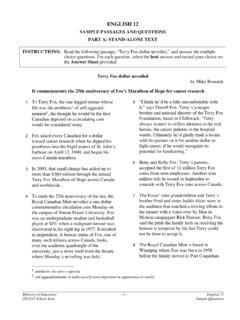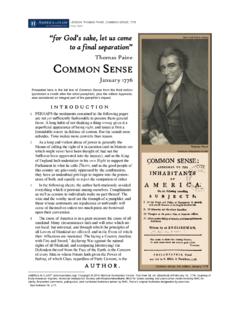Transcription of Titles Using Italics and Quotation Marks
1 Titles Using Italics and Quotation Marks How to properly write Titles Using Italics and Quotation Marks are questions a lot of us have. Italics are used for large works, names of vehicles, and movie and television show Titles . Quotation Marks are reserved for sections of works, like the Titles of chapters, magazine articles, poems, and short stories. Let s look at these rules in detail, so you'll know how to do this in the future when writing. Titles Using Italics and Quotation Marks Italics and Quotation Marks are used for Titles of books, plays and other works of art. These Italics and Quotation Marks are used to set the title apart from the text surrounding it. For example, if you were writing a sentence that explained "I read The Cat in the Hat" it wouldn't necessarily be clear exactly what the title was, or even that there was a title at all.
2 As such, Italics and Quotation Marks are used to offset the title and to make it stand out from the rest of the text. A sentence reading: I read The Cat in the Hat or I read "The Cat in the Hat" is suddenly a lot more clear. We know now what you read. However, which should you use? Should you set off a title with Italics or should you set it off with Quotation Marks ? The rules for Titles Using Italics and Quotation Marks can answer that question for you. When to Use Italics for a Title Italics are used in the Titles of Books Full-length plays long poems Music albums Anything that has sections, like anthologies or collections Newspapers Magazines Movies Television and radio shows Ships (With ships and other craft, the USS or the HMS is not italicized.)
3 Airplanes Spacecrafts Trains Some scientific names Court cases Works of art Musical works like operas and musicals Computer and video games Of course, italicizing is easy on the computer, but what about if you are hand writing something? In such cases, underlining is still used and is the same as writing a title in Italics . However, you should not both italicize and underline a title. Titles Using Italics and Quotation Marks When to Use Quotation Marks Quotation Marks enclose the Titles of: Short works Sections of long works including chapters, articles, songs, short stories, essays, poems, short films, and any other time a long work is included in an anthology or collection Technically, television shows and movies are to be italicized because individual scenes or episodes would be put in Quotation Marks .
4 However, many times these Titles are put in Quotation Marks and you will find this done quite often, especially in reviews. When Not to Use Titles or Quotation Marks Titles of things that should not be in Italics or Quotation Marks are: Scriptures of major religions (italicize the title of the published version) Constitutional documents Legal documents Traditional games (such as leapfrog) Software Commercial products (such as Cocoa Puffs) By practicing the above rules for Using Italics and Quotation Marks you will find that it will become easier to determine what you should use. It will also help your learning curve if you take the time to concentrate on how they are used in books and articles you are reading.
5 Source.















